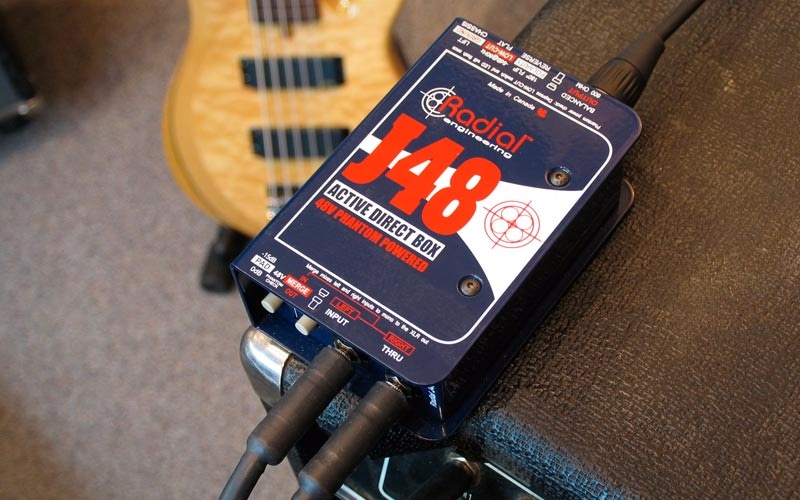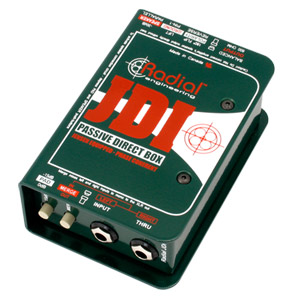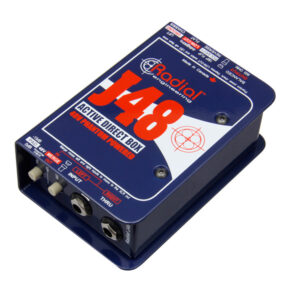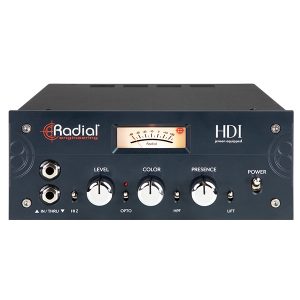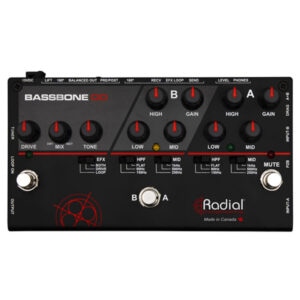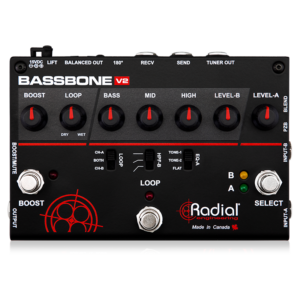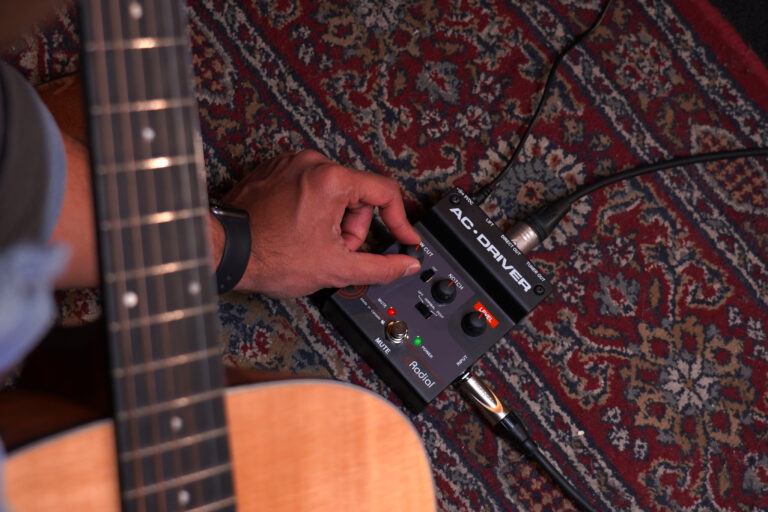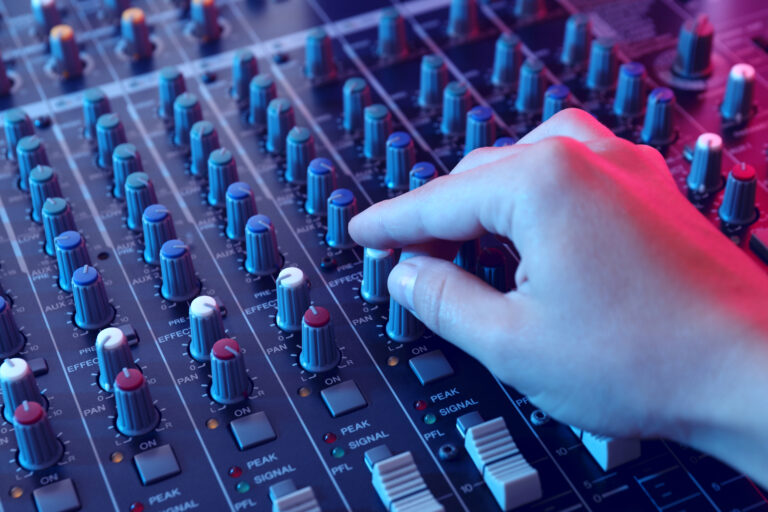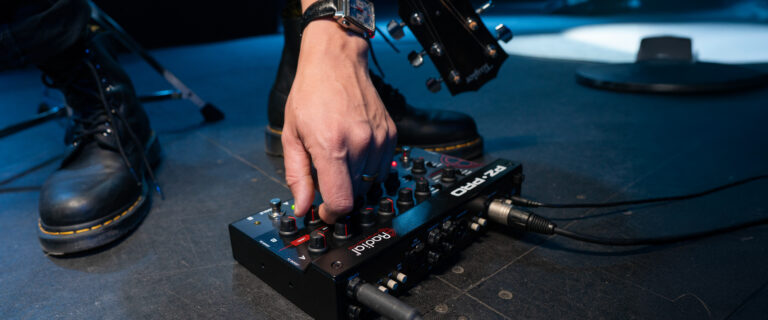What type of direct box works best for bass guitar? Well, it depends on the type of bass that the DI is going to be used with.
When it comes to signal flow, there are two types of bass guitars: passive and active. The first electric basses, i.e., the original Fender Precision, were passive (and still are today).
They employed magnetic pickups to generate the signal – as the string moves in and out of the magnetic field, a low-level alternating current is generated.
The signal from the bass travels through the cable to the amplifier, which in turn increases the voltage level so that it is sufficiently powerful to drive another electromagnetic device: a loudspeaker. In essence, the signal is amplified by a series of buffers that work together to increase the voltage and/or current as needed.
For years this worked well until fans at concerts became too loud. The bass amp was unable to produce enough ‘thump’ to overtake the screaming. The solution became to send the bass guitar signal through the PA system.
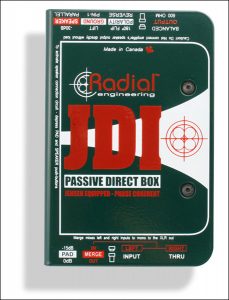
Thus, the direct box was born.
The first direct boxes were basically hand-made black boxes that had transformers inside.
These passive devices would tap a signal off the bass and split it so that part of the sound would go to the bass amp on stage. The rest of it would go to the PA system, some 50 to 100 feet away.
Eventually, things escalated to the point where concerts moved to arenas and stadiums with larger PA systems.
But bass players started to complain. They noticed that when their bass was connected to all of the long cable runs in these larger systems, the sound changed. It was not as beefy, and there was no more thud.
This shouldn’t have come as a surprise. If you take the signal from a magnetic pickup and ask it to drive hundreds of feet of cable in addition to the bass amp on stage, the level will be weaker. This effect is known today as “loading.”
The solution: buffer the bass signal. In other words, incorporate a small amplifier inside the direct box so that 99 percent of the signal is directed to the bass amp and 1 percent is split off to drive the PA. These active direct boxes returned the thud to the P-Bass.
This all worked well until one day, someone decided to put a 9-volt battery inside the bass and buffer the signal. Now, instead of the bass producing around 1 volt, the battery powered preamp inside the bass was kicking out 5 to 7 volts.
Then the CEO of the Acme Bass Company had a revelation: “We can do even better—let’s put in a second battery!” A modern 6-string bass could now deliver a whopping 18 volts of mayhem, and bass players rejoiced.
Except for one problem, that 18-volt output now overloads the direct box, resulting in a distorted, muddy, no-punch sound in the PA system.
The solution? Dust off the old passive direct box and connect it up to restore the great tone and thud.
Phantom Solution
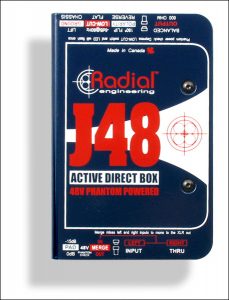
Here’s the deal. Early active direct boxes were powered by batteries, but the problem with batteries is that they go dead… usually right in the middle of the second set.
So some years ago, DI manufacturers started to use phantom power as a means to supply the needed voltage and current to the active DI box (buffering amplifier).
But phantom power, invented by Dr. Neumann as a means to supply a polarizing voltage to his condenser microphones, was never intended to be a power source for an amplifier. And without current, you do not get headroom.
Think of a bass-playing through a miniature guitar amp – turn it up, and it distorts like crazy. DI boxes do exactly the same. Without headroom, high-output bass signals will cause the buffering amplifier in the DI to distort.
Back then, basses were all passive for the most part, so they worked fine with regular phantom power as the buffers only had to process 1 to 3 volts. The advent of active basses with their huge output levels changed the rules.
Two Groups
The rule of thumb is that for a high-output bass that already has a built-in buffer, a passive direct box will likely do a great job—the bass will produce the drive. On the other hand, for a low-output passive bass, an active DI will leave the bass sound unaffected while generating the drive for the PA system.
Keep in mind that the sound quality of DI boxes depends on the circuit design and parts that are being used. Better designs focus on eliminating all types of “bad” distortion such as harmonic, phase, and inter-modulation distortion. These designs are then categorized into two groups.
Some direct boxes are designed to transfer the signal without artifact or distortion so that the original sound of the bass is delivered as purely and naturally as possible. The JDI and the J48 fall into this category. Other DIs, such as the Radial HDI, are specifically designed to provide the option to “color” the sound with “good” distortion to create new bass tones and exciting textures. Both are useful, depending on the desired outcome.
Going beyond the Direct Box
For bass players that desire even more control over their tone and signal routing on stage, another category of Direct Box provides additional options: the combination preamp/DI box.
A preamp pedal goes a step further in terms of the tonal shaping available, and generally includes level controls, the option to switch between multiple inputs (say an upright and an electric bass), and tone shaping tools to fine-tune your instrument’s output. They can also be used to bring effects pedals in and out of the signal chain with the press of a footswitch.
With the addition of a high quality direct box output, this elevates the preamp so it becomes the control center for your stage setup while also acting as the interface between your rig and the PA.
The Bassbone OD and the Bassbone V2 fall into this category, providing both the tone and level controls that allow you to shape your sound at will, as well as a balanced XLR direct output to feed a clean signal to the PA simultaneously. Look for additional features that suit your specific setup, such as a clean boost that can be footswitch controlled or an overdrive circuit that you can blend in to your original signal.



